Interplay of acute and persistent infections caused by Venezuelan equine encephalitis virus encoding mutated capsid protein
- PMID: 20668087
- PMCID: PMC2937817
- DOI: 10.1128/JVI.01151-10
Interplay of acute and persistent infections caused by Venezuelan equine encephalitis virus encoding mutated capsid protein
Abstract
Venezuelan equine encephalitis virus (VEEV) is a significant human and animal pathogen. The highlight of VEEV replication in vitro, in cells of vertebrate origin, is the rapid development of cytopathic effect (CPE), which is strongly dependent upon the expression of viral capsid protein. Besides being an integral part of virions, the latter protein is capable of (i) binding both the nuclear import and nuclear export receptors, (ii) accumulating in the nuclear pore complexes, (iii) inhibiting nucleocytoplasmic trafficking, and (iv) inhibiting transcription of cellular ribosomal and messenger RNAs. Using our knowledge of the mechanism of VEEV capsid protein function in these processes, we designed VEEV variants containing combinations of mutations in the capsid-coding sequences. These mutations made VEEV dramatically less cytopathic but had no effect on infectious virus production. In cell lines that have defects in type I interferon (IFN) signaling, the capsid mutants demonstrated very efficient persistent replication. In other cells, which have no defects in IFN production or signaling, the same mutants were capable of inducing a long-term antiviral state, downregulating virus replication to an almost undetectable level. However, ultimately, these cells also developed a persistent infection, characterized by continuous virus replication and beta IFN (IFN-beta) release. The results of this study demonstrate that the long-term cellular antiviral state is determined by the synergistic effects of type I IFN signaling and the antiviral reaction induced by replicating viral RNA and/or the expression of VEEV-specific proteins. The designed mutants represent an important model for studying the mechanisms of cell interference with VEEV replication and development of persistent infection.
Figures

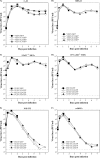

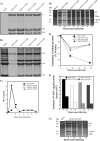
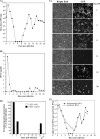

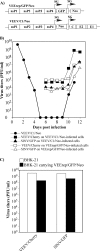
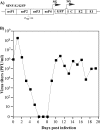
References
-
- Amor, S., M. F. Scallan, M. M. Morris, H. Dyson, and J. K. Fazakerley. 1996. Role of immune responses in protection and pathogenesis during Semliki Forest virus encephalitis. J. Gen. Virol. 77:281-291. - PubMed
-
- Borgherini, G., P. Poubeau, A. Jossaume, A. Gouix, L. Cotte, A. Michault, C. Arvin-Berod, and F. Paganin. 2008. Persistent arthralgia associated with chikungunya virus: a study of 88 adult patients on Reunion Island. Clin. Infect. Dis. 47:469-475. - PubMed
Publication types
MeSH terms
Substances
Grants and funding
LinkOut - more resources
Full Text Sources
Other Literature Sources
Research Materials
Miscellaneous

